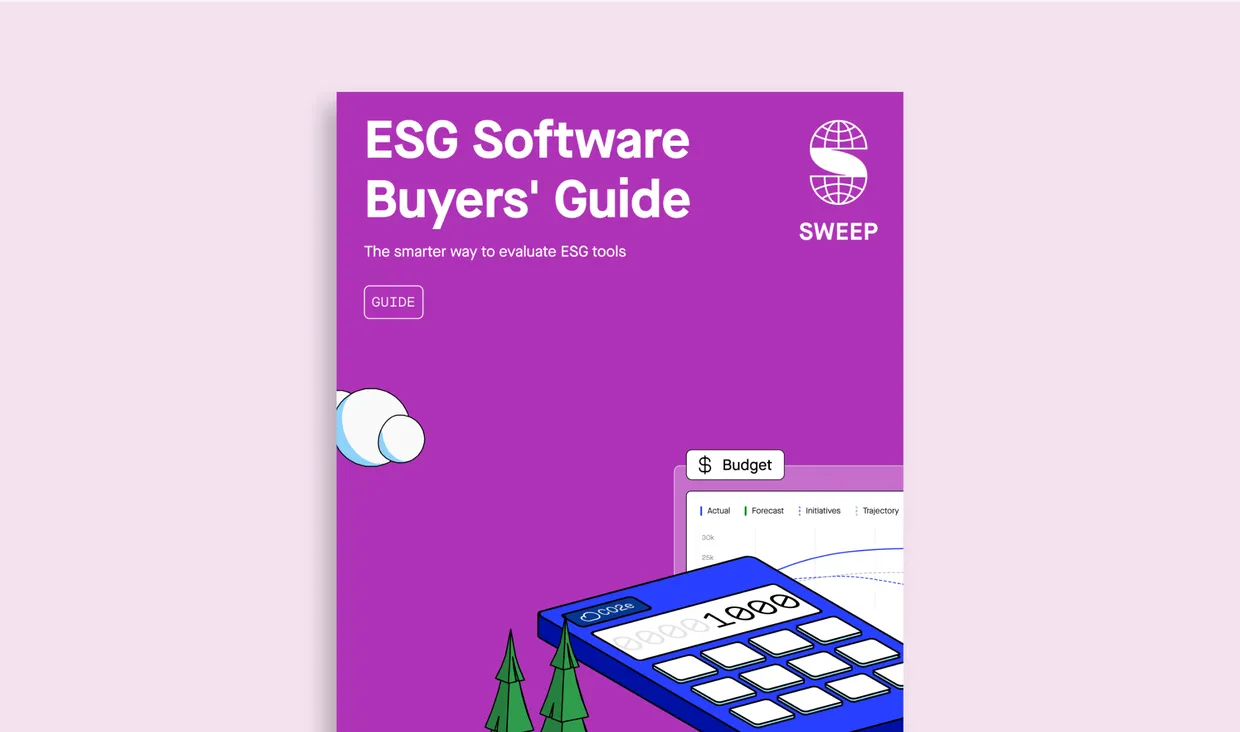11 Must-have capabilities in ESG software
When selecting ESG software, you’re investing in a platform that should not only support your current needs but scale with your business as regulations evolve and sustainability goals shift. Here are 10 key capabilities to look for that will ensure your ESG software delivers real business value and future-proof compliance.
1. Centralized data management
Why it matters: Efficient decision-making requires a unified source of truth. Data silos across departments can slow progress and undermine trust in ESG reporting.
- Look for: A platform that centralizes all ESG data in one place, consolidating emissions, waste, water usage, and other critical data from across your organization and supply chain.
- Why it’s a game-changer: Ensures consistency, improves reporting accuracy, and allows for a seamless overview of your entire ESG landscape.
2. Customizable reporting templates
Why it matters: Different stakeholders and regulations require different reports, but manual reporting can be time-consuming and error-prone.
- Look for: Pre-built, flexible templates for common frameworks (e.g., TCFD, GRI, ISSB), along with the ability to customize them to suit your specific needs.
- Why it’s a game-changer: Streamlines reporting, reduces manual input, and increases accuracy and consistency, making reporting quicker and more reliable.
3. Version control and audit trails
Why it matters: ESG data must be transparent, verifiable, and auditable. Versioning ensures that any changes to the data or reports are tracked and can be referenced when needed.
- Look for: Built-in versioning systems that automatically track changes, edits, and approvals. Comprehensive audit trails for every data point.
- Why it’s a game-changer: Helps you maintain compliance, simplifies audits, and provides full transparency when verifying ESG reports.
4. Scenario planning and forecasting
Why it matters: ESG is about more than just tracking; it’s about proactive planning and managing risk. Scenario planning helps you model future impacts and forecast outcomes based on different strategies.
- Look for: Tools that allow you to simulate various scenarios for your carbon footprint, sustainability initiatives, and climate risks, with the ability to analyze and adjust.
- Why it’s a game-changer: Empowers your business to plan for multiple futures, helping you allocate resources more effectively and future-proof your strategy.
Why it matters: ESG efforts need to be measurable, not just aspirational. You need to track progress and pinpoint areas for improvement.
- Look for: Real-time analytics and performance dashboards that measure progress against goals like net-zero emissions, waste reduction, and employee diversity.
- Why it’s a game-changer: Offers actionable insights and helps ensure that your sustainability strategy is not only being implemented but is effective and evolving.
6. Integration with existing systems
Why it matters: ESG data doesn’t live in a vacuum. Your ESG software needs to integrate with financial, HR, and operational systems to make the most of your data.
- Look for: Seamless integrations with your existing enterprise resource planning (ERP), customer relationship management (CRM), and other business systems.
- Why it’s a game-changer: Saves time, reduces data entry errors, and ensures that sustainability goals are tracked alongside financial and operational data.
7. AI and automation for data collection and validation
Why it matters: Manual data entry is inefficient and prone to error. Automation and AI can streamline data collection, validation, and reporting.
- Look for: AI-powered tools that automatically pull in and validate data, flagging discrepancies and ensuring accuracy across all ESG metrics.
- Why it’s a game-changer: Increases data accuracy, reduces manual workload, and frees up your team to focus on strategy rather than administrative tasks.
Why it matters: ESG initiatives require cross-functional collaboration, and you need tools that facilitate teamwork and communication. The best solutions make it easy to involve colleagues, partners and suppliers. So sustainability isn’t a siloed initiative, but a common mission with shared benefits.
- Look for: Integrated collaboration tools like task management, document sharing, and team-specific dashboards that support a coordinated approach across departments.
- Why it’s a game-changer: Encourages alignment across your sustainability team and other departments, ensuring everyone is on the same page and moving toward common goals.
9. Customizable dashboards and KPIs
Why it matters: Every organization has unique priorities and ESG goals. Your software should let you focus on the metrics that matter most.
- Look for: A platform that allows you to customize dashboards with KPIs that align with your business objectives and regulatory requirements.
- Why it’s a game-changer: Provides real-time insights that are directly relevant to your priorities, helping your team stay focused on driving impact.
10. Cross-disclosure framework reporting and reuse
Why it matters: Reporting needs evolve. New standards come along, existing ones change, and stakeholder expectations grow. No one wants to start from scratch every time.
- What to look for: A platform that lets you collect data once and re-use it across CSRD, GRI, ISSB, CDP, California Acts and beyond.
- What to avoid: Software with rigid data structures. Customisation limitations when it comes to extracting data and building custom reports. Specialising in only a couple of reports (ex: only GHG and CSRD) and data types (ex: carbon-only).
- What great software does: Saves time, ensures consistency, and keeps you ready for whatever regulation or stakeholder comes next.
11. Scalability and flexibility
Why it matters: As your business grows and ESG requirements evolve, your platform needs to scale without losing performance.
- Look for: A solution that can handle increasing data volume, complexity, and new regulations. Look for flexibility to add new features or frameworks as your business needs change.
- Why it’s a game-changer: Future-proofs your investment, allowing you to adapt to new regulatory environments, sustainability trends, or business growth without needing a platform overhaul.
By prioritizing these 11 capabilities, you’ll not only meet the demands of your stakeholders but also unlock the full potential of your sustainability efforts. Selecting the right platform isn’t just about ticking boxes — it’s about choosing a tool that helps you meet and exceed your sustainability goals while driving measurable business value.





